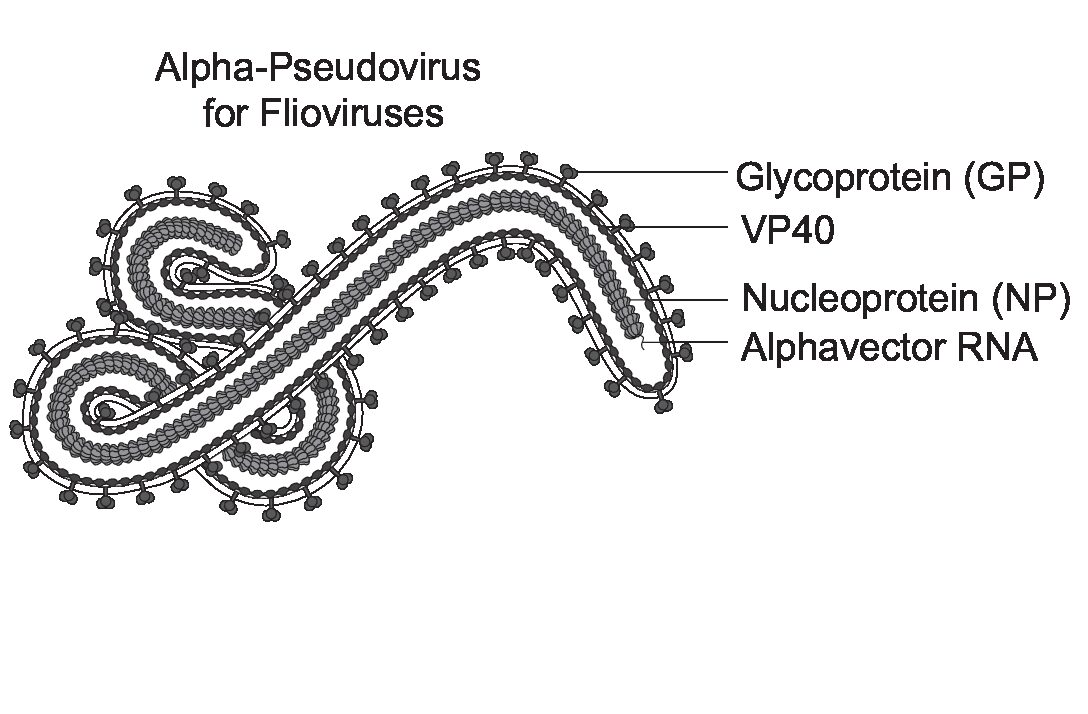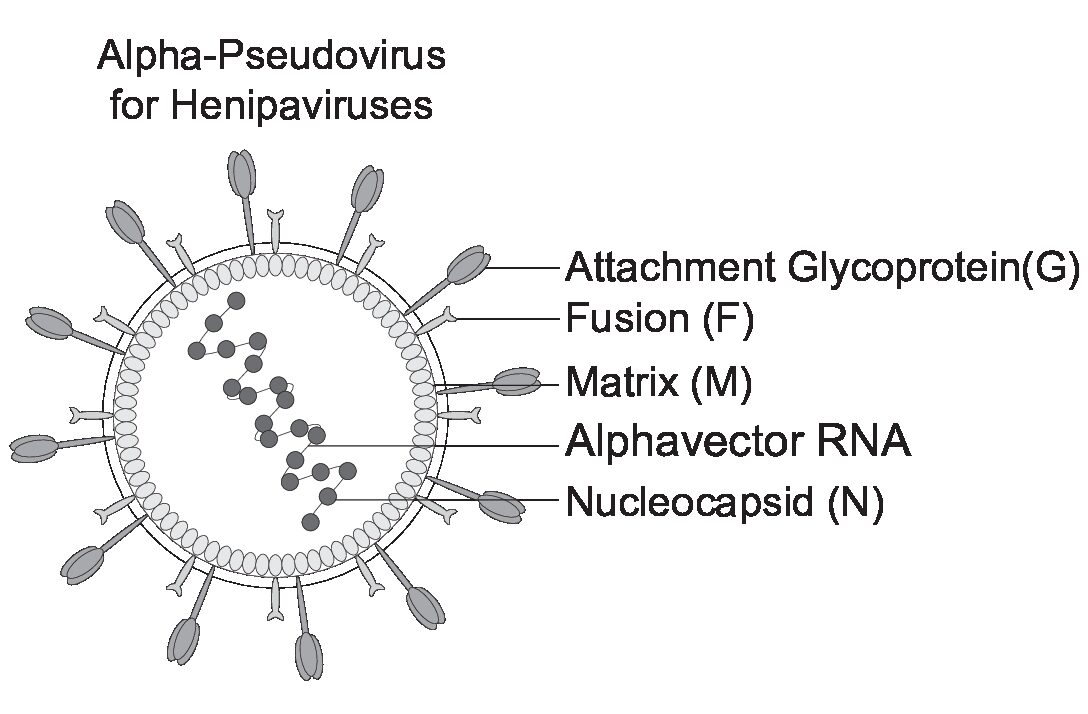$750.00 – $14,100.00
Rapid Alpha-Pseudoviruses for Influenza A
IAV H5N1 alpha-psuedovirus, Ha-IAV(H5N1), is based on the strain: A/Thailand/NBL1/2006(H5N1)
Other Influenza strains are available upon request.
Product Description
Product Description
Rapid Alpha-Pseudovirus for Influenza Virus
Built-to-order alpha-pseudovirus for Influenza viruses (IAV) with the Hemagglutinin (HA), Neuraminidase (NA), Nucleoprotein (NP), Matrix (M1), and Ion Channel (M2).
Applications
- IAV pseudovirus transduction of target cells for viral entry and functional studies
- Rapid Anti-IAV drug screening
- Rapid Anti-IAV neutralizing antibody screening
A novel rapid hybrid alpha-pseudovirus for Influenza virus (Ha-IAV) and other Orthomyxoviridae viruses are now available at Virongy. Ha-IAV particles are pseudoviruses assembled from the structural proteins of the Influenza virus: Hemagglutinin (HA), Neuraminidase (NA), Nucleoprotein (NP), Matrix (M1), and the Ion Channel (M2). They also encapsulate an alphaviral vector for reporter gene expression. The alpha-pseudoviruses are single-cycle viruses with self-replicating RNA for rapid quantification of neutralizing antibodies and entry-inhibiting drugs. These pseudoviruses are BSL-2 safe and ready to use for studying viral entry. Furthermore, we assist our customers in constructing Ha-IAV pseudoviruses at any scale.
For inquiries, please reach out to us via email: info@virongy.com
To enhance your pseudovirus entry, inquire about receiving a complimentary sample of our proprietary Infectin, which significantly enhances productive viral infection in various host cells, thereby boosting the viral infection rate by 3- to 20-fold.
Background:
Influenza viruses are enveloped with a segmented, single-stranded negative-sense RNA genome, totaling 13.5 Kb in size, divided into 8 segments that code for 12-14 proteins depending on the strain. These segments vary in size from 890 to 2,341 nt. Virions are typically 80-120 nm in diameter and can take on rounded or filamentous shapes. The virus attaches to host cells via sialic acid receptors using the HA protein and enters the cell through clathrin-mediated endocytosis. Acidification of the endosome triggers fusion of the virus membrane with the vesicle membrane, allowing encapsidated RNA segments to migrate to the nucleus. Replication and transcription of genomic segments follow. The viral RNA polymerase (comprising PB1, PB2, and PA subunits) transcribes one mRNA from each genome segment, initiating transcription by cap-snatching from host cell mRNAs. Viral mRNA is then polyadenylated by the viral polymerase through a poly U track stuttering mechanism. Alternative splicing of MP and NS mRNAs yields mRNA encoding M2 and NEP proteins. High levels of M1 protein facilitate genome segment export from the nucleus via the NEP protein, then the virus assembly and budding take place at the plasma membrane.
Ha-IAV(H5N1) is a pseudovirus for Influenza A virus (A/Thailand/NBL1/2006(H5N1)).
The particles contain the following structural proteins.
- Hemagglutinin MG668931.1
- NA MG668933.1
- NP MG668932.1
- Matrix 1 + Matrix 2 MG668934.1
Documents
References
References
Related links:


 Alpha Pseudovirus – MSDS
Alpha Pseudovirus – MSDS





